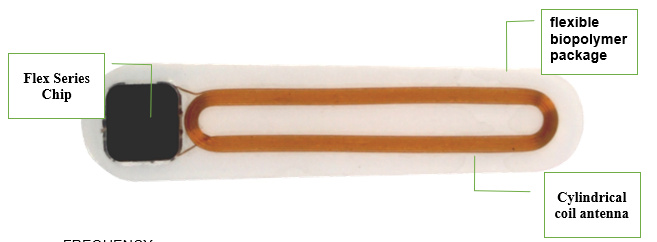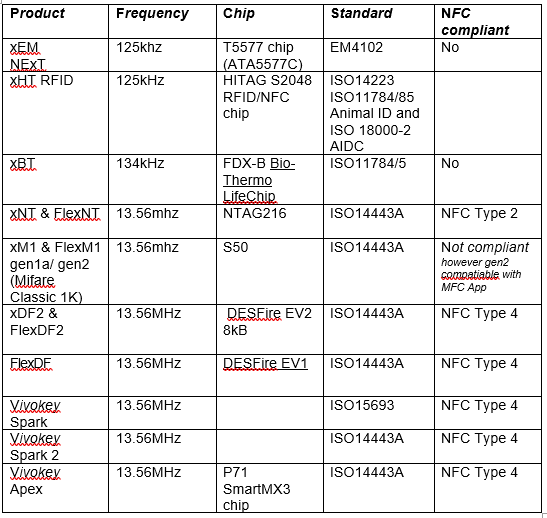FYI- I know there are inaccuracies, things in the wrong place and missing information… I still have a bit of work to do…
But if you are interested
WIKI – Frequency, Chips, Protocols and standards explained
Here is the Work in progress
Hi Lounge team, I am thinking about making another WIKI, with a level up  explaining as the title says. Before I spend any more time on it, Let me know if you think it is worth pursuing, and feel free to add suggestions or edit as you see fit! Still A LOT of work to do on it, this is just a placeholder for living document.
explaining as the title says. Before I spend any more time on it, Let me know if you think it is worth pursuing, and feel free to add suggestions or edit as you see fit! Still A LOT of work to do on it, this is just a placeholder for living document.
.
.
.
The goal of this Wiki is to condense the information contained within, for the beginner to intermediate user, to expand their further understanding of Chips, Protocols and Standards used in implants.
ANATOMY OF AN IMPLANT
xSeries
cylindrical sterile bioglass implant
x-series chips have a cylindrical coil antenna wrapped around a ferrite rod encased in biosafe resin
I WILL ADD NICER ARROWS AND LABELS TO DIAGRAMS
Chip, antenna, enclosure etc
And hopefully a higher Res Photo
Flex Series
flexible biopolymer package
coated in USP Class VI, ISO 10993 tested biopolymer which gives it an extremely thin profile and semi-flexible structure
.
.
.
PRODUCT MATRIX
DISCOURSE HANDLES TABLES WEIRDLY, I WILL NEED TO WORK ON THIS
Dangerous Things Website has a more detailed and Informative Product Matrix
Image as an example
.
.
.
*CHIP SPECIFICATIONS*
T5577
(ATA5577C) also referred to as t557x on the Proxmark
T5577 is an RFID chip that can emulate many different types of 125kHz chip types
EM41xx,
EM4200,
HID 1326
ProxCard II,
HID 1346
ProxCard III
Indala
AWIA.
The T5577 does not support “tear protection”
The T5577 has password protection functions to block reconfiguration by accident or malicious attack.
NTAG216
- 7 byte UID and 886 bytes of user read/write memory
- 10 year data retention. Rated for 100k writes per memory block.
Data Sheet
S50
S50 Mifare Classic S50 1K chip. This chip type is ISO14443A compliant but is not NFC compliant
xM1 13.56mhz S50 (Mifare Classic 1K)
The xM1 is a high frequency 13.56MHz transponder based on the Mifare Classic S50 1K chip. This chip type is ISO14443A compliant but is not NFC compliant. The xM1 has 768 bytes of user programmable memory and also supports Crypto1 security features. The xM1 is supported only on some NFC devices which contain a reader chip from NXP. While the xM1 will work with any ISO14443A reader, including our PN532 reader, it cannot be expected to work reliably with all NFC devices. We supply the xM1 for people who have a specific need for this particular chip type.
https://forum.dangerousthings.com/uploads/short-url/5dvQpEwbU3ac41o2JFzorvHcs86.pdf
DesFire EV1
Memory
Encryption
DesFire EV2
Memory
Encryption
P71 SmartMX3 chip
P71 SmartMX3 chip, Vivokey Apex
Memory
Encryption
.
.
.
*PROTOCOLS*
NFC – Near Field Communication is a set of communication protocols
( NDEF ) NFC Data Exchange Format is a standardized data format that can be used to exchange information between any compatible NFC device and another NFC device or tag. The data format consists of NDEF Messages and NDEF Records
All of the HF implants are NFC compliant with the exception of the M1 family ( xM1, FlexM1 gen1a, FlexM1 gen2 )
Mifare S50 1K tag is also a passive RFID tag that also operates at 13.56MHz and is also ISO14443A, but it is not NFC compliant
.
.
.
*STANDARDS*
ISO - International Organization for Standardization ( French )
EM4102
ISO14223 ISO11784/85 Animal ID and ISO 18000-2 AIDC
ISO11784/5
ISO15693 – Vivokey Spark (Original)
ISO14443A
.
.
.
GLOSSARY
ISO - International Organization for Standardization ( French )
RFID - is an initialism for Radio Frequency IDentification
NXP - NXP Semiconductors N.V. is a global semiconductor manufacturer
References
X-Series Implantable Transponder FAQ
About the NDEF Format | Adafruit PN532 RFID/NFC Breakout and Shield | Adafruit Learning System
https://forum.dangerousthings.com/uploads/short-url/5dvQpEwbU3ac41o2JFzorvHcs86.pdf
https://store.dangerousthings.com/wp-content/uploads/doc_NTAG213_215_216.pdf


